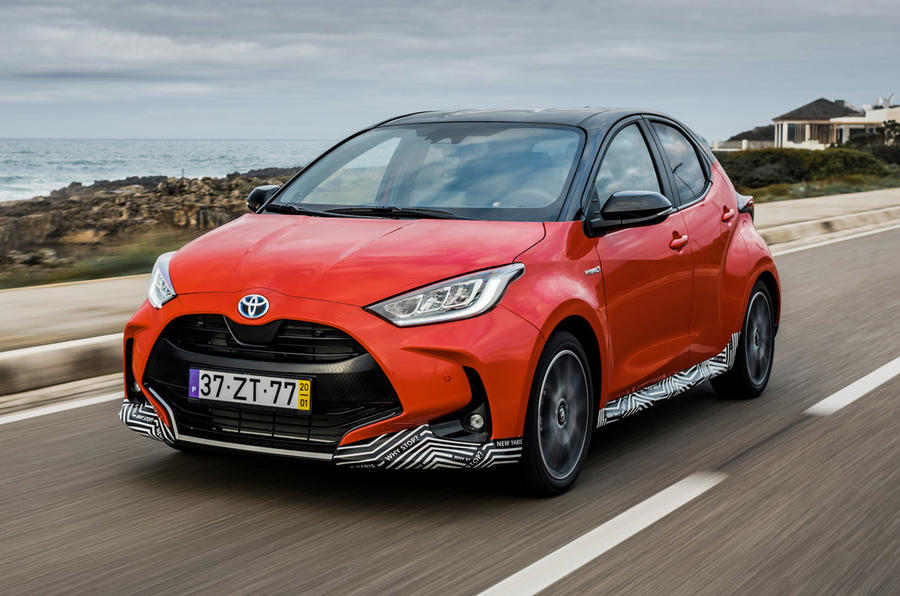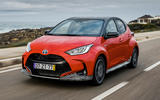Behind the least convincing camouflage we’ve ever seen is the fourth-generation Toyota Yaris. No, it isn’t the GR-Four (it has too many doors for that), but the far more real-world relevant hybrid model that will make up the vast majority of sales.
Of course, with everyone jumping on the electrified bandwagon of late, Toyota must be feeling jolly smug with itself. After all, it has been making hybrid versions of the Yaris since 2012.
But this isn’t some heavily facelifted version of the third-gen car; it’s an all-new model from the ground up. For a start, its platform has been switched to a version of the TNGA architecture that underpins the Toyota Corolla, bringing a 37% increase in torsional rigidity. Width is up by 50mm, as is the wheelbase, but overall length is down by 5mm. Height has been reduced as well, bringing about a 21mm lower seating position and a 12mm drop in the centre of gravity.
Those changes are all attempts to boost agility and driver appeal, but would have been pointless with the sluggish old hybrid system. Thankfully, there’s a new 1.5-litre three-cylinder Atkinson cycle engine under the bonnet. This long-stroke engine is paired with two electric motors and a lighter, more powerful Li-ion battery pack to give 16% more power, yet brings a 20% reduction in CO2 emissions.
With a combined output of 114bhp, 0-62mph is reduced by two seconds to a perfectly respectable 10.3sec, and the power boost also means the new car’s engine doesn't have to be worked as hard, making it far quieter while delivering useful acceleration. Most of the time, you’ll find the Yaris a quiet partner; its distant engine thrum is more subdued than you'll hear in many rivals. You still occasionally find the revs soaring and staying there – a trait that comes courtesy of the hybrid's CVT automatic gearbox – but the motor doesn’t sound quite so tortured when this happens.












































Join the debate
Add your comment
It almost looks good, but
It almost looks good, but theres something wrong with the proportions at the back, maybe its those stupid black roof n pillars, sadly I fear it isnt.
Finally Toyota has realised that with hybrids you need to DOWNSIZE the engine, why did it take them 20 years ??
typos1 wrote:
Hasn't the Yaris always been a 1.5? It was originally the 1.5 power train from the MK2 Prius I thought
There is a lot to like about
There is a lot to like about this new Yaris. Where the Mk3 looked dowdy and grim inside, this at least has a lot more interesting details. There is something of the Mk1 about it all. Won't touch the Fiesta for driving, nothing really does, but it at least has something interesting going on. PLus, can't wait for the the bonkers GR AWD monster coming out!
Added benefits
In my opinion, it looks a lot better than the current model. 61.4 MPG real life economy will appeal. Add in the benefits of Toyota reliability and after sales service, seems like Toyota will have a strong contender in this category of vehicle.